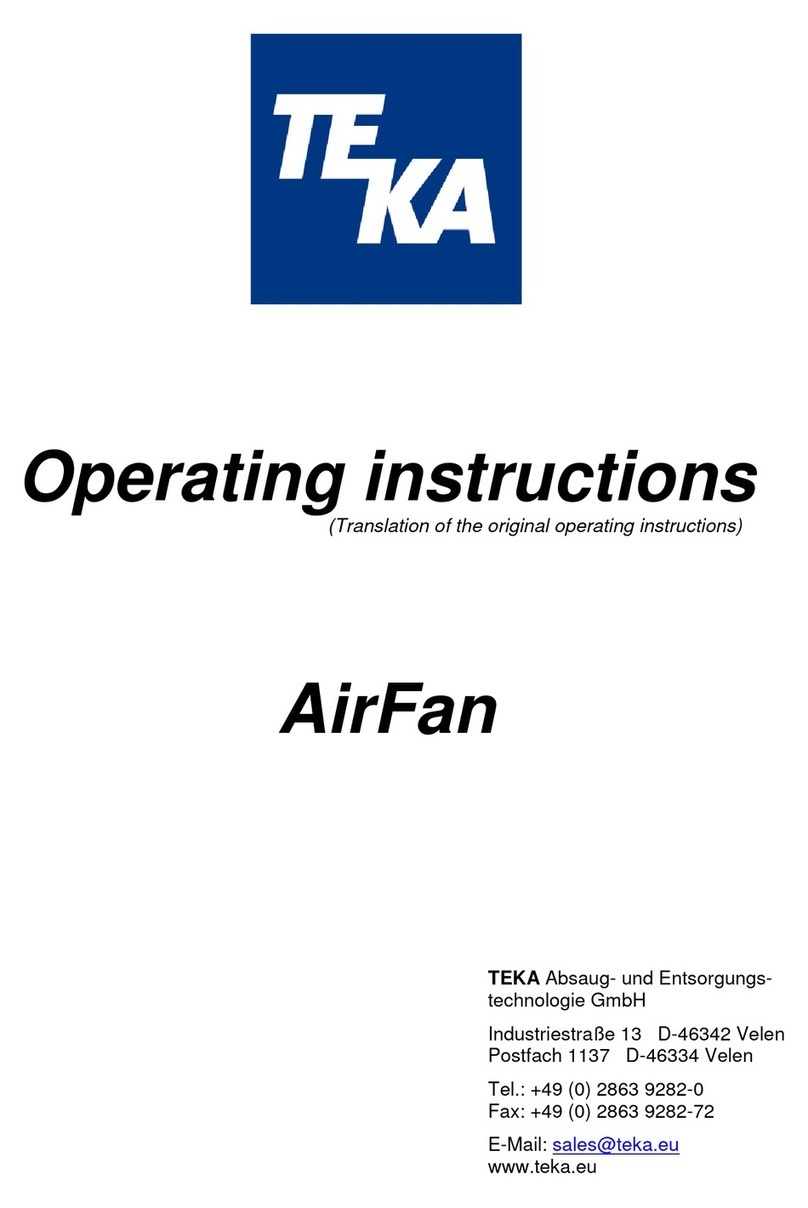
5.1. Connecting the suction line and exhaust air line
For extracting the contaminated air, a suction line must be connected to the suction nozzle (see chapter
2.1).
Depending on the application, the suction pipe must be equipped with extraction elements (suction arm,
extraction hose, round duct grille, etc.). When using a capture element with an extractor cowl, the
extractor cowl must follow the weld seam, if possible by using the movement of the welding fume
caused be thermal influences.
You have to make sure that connections between the workpiece and the suction
hood (and in general between the workpiece and the filter unit) are avoided in order to prevent
the welding current from flowing back to the welding machine via the protective conductor of the
filter unit.
If the air shall be directly sucked off by an upstream machine, the suction line must be connected to the
capture opening of the upstream machine.
The exhaust air pipe must be attached to the exhaust nozzle (see chapter 2.1).
Danger to life when reaching the fan impeller.
The required exhaust air pipe must be attached before the commissioning.
This also applies to the suction line.
The fan may only be operated without suction line or exhaust air line if the suction nozzle and
exhaust air nozzle are secured by a grille.
5.2. Electrical connection
Electric malfunction possible in cause of an incorrect power supply.
Pay attention to the admissible supply voltage. Please observe the specifications on the type
plate.
● Connect the mains cable (see chapter 2.1) to the power supply.




























